By Miranda Evans
Bachelor of Science, majoring in Geography and Neuroscience.
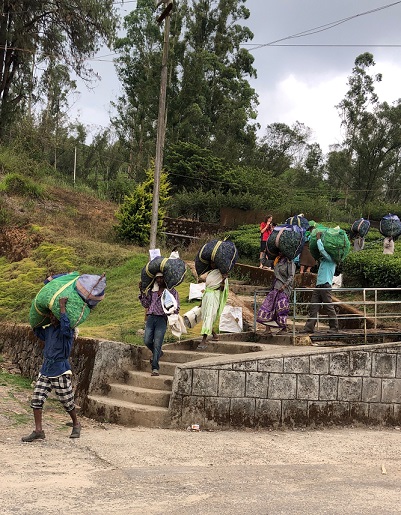
Photo: Tea pickers in Munnar
Every minute, 30 people are migrating from rural India to urban areas. There’s no doubt India’s major cities are facing incredible challenges to accommodate the influx. During our first week in Mumbai, this was our focus. But as we travelled south to the state of Kerala, we began to look at the migration story form the rural side of the equation. An estimated 10% of Keralans live outside the state. Migration has been beneficial for reducing the state’s poverty rate and relative deprivation. But what does it mean for employment?
1,600 metres above sea level is the town of Munnar, surrounded by rolling hills filled with tea plantations. On a visit to the Munnar Tea Museum, we spoke with a group of women teapickers as they deposited their 25kg bags of tea leaves from their day’s work. The women proudly told us their children have left Kerala to study commerce and medicine and other forms of higher education. Education provides an important pathway for social mobility.
Tea plantation workers are among the lowest paid workers in Kerala and at the bottom of the labour market. Their typical work day is 10 hours long, 6 days a week. Women work on the field, delicately plucking the new tea leaves. Men are employed in the factories as ‘unskilled’ labourers. The manager at our hotel told me he was from a family who traditionally worked in the tea plantations. But his parents didn’t want him to follow them into this industry given the tough working conditions. As we were talking another hotel employee sat down next to me. He had spent seven years working in tea factories prior to seeking employment at the hotel. The hotel manager told me that once you enter the industry, you are locked in and it is hard to leave as you are dependent on your employer to supply drinking water, housing, food, education and healthcare. The hotel employee told me he wished he had moved to a city like most of his friends, as life was too dependent on local industries in Munnar. This made me wonder how tea plantations were finding employees if the locals were no longer interested in working in Munnar’s leading industry.
The answer I found was migrant labour. Hopeful migrants from the northern and eastern Indian states have moved to Munnar and tea plantations across Kerala seeking safe and sustainable working conditions. Despite having no skills or previous experience in the sector, the shortage of local labour has forced plantation management to employ these people. Plantations strategically hire migrant families knowing they are reluctant to move away once settled into local communities. These families move to Kerala with hope for a prosperous new beginning in the lush hills of southern India. When faced with the harsh reality of the tea plantation industry, I wonder is the tea really greener on the other side?
Inclusive Education – Srishti Welfare Centre
By Nikki Stevenson
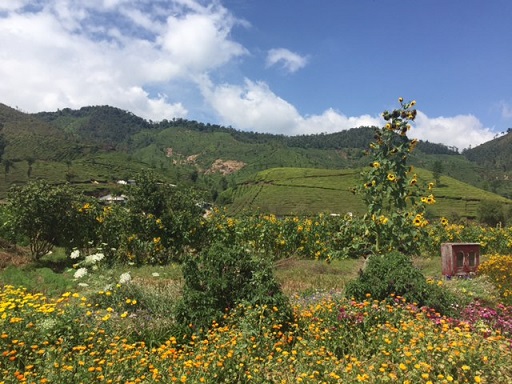
Travelling from Mumbai south to Kerala, the poverty observed is confronting but most definitely thought provoking. India’s poverty is heavily influenced by the caste system. Being low caste places restrictions on all aspects of one’s life – especially work opportunities. Low caste communities dominate strenuous and hazardous work roles. For disabled people of low caste the challenge of finding decent work is especially tough. The Srishti Welfare Centre aims to support these workers.
The Srishti Welfare Centre is a private organisation that provides education, paid work and vocational training to children and adults with a disability. Located in the picturesque countryside of Munnar, in the state of Kerala, the welfare centre is set amongst the mountains, with a lush garden of colourful flowers, vegetable patches, and a well-used children’s playground. What Srishti achieves as a welfare centre is extraordinary. Education is a key focus. Srishti accepts children from as young as 3 and a half years old and allocates them into classes based on their ability, rather than age. The teacher to student ration is generally 1:8, with students instructed in the Tamil language, but also taught English, and sign language, as many of the students have hearing aids.
Most of the students at Srishti are the children of local tea plantation estate workers. These children are provided transportation to and from the centre with some students travelling up to 30kms one way. Students are also provided with meals and all learning materials. The Centre is funded by TATA – a multinational conglomerate company that owns many of the tea plantations in Munnar.
Srishti also offers vocational training. These skills are taught from the age of 16 and include food processing, market gardening, training as pastry chefs producing goods for an on-site bakery, fabric dying and garment making, and paper making. All the products are sold in the Indian market and to tourists visiting the welfare centre. The proceeds are than circulated back into the centre to further support the education and skill enhancements of children and adults with disabilities. Srishti also supports their graduates find employment outside the Centre.The Srishti Welfare Centre is a clear example of an organisation that supports disadvantaged communities often overlooked by government welfare systems.
Beyond the hierarchy – ‘possibilities for a non-alienated life’
By Victoria Booth
Bachelor of Science, Immunobiology and Geography
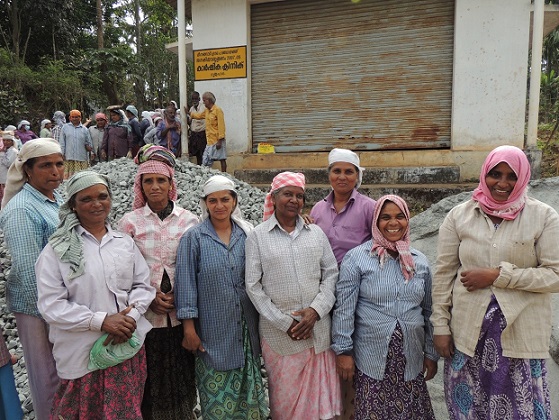
Photo: Women working as part of the NREGA Scheme within the Wayanad District of Kerala
‘Dear friends’ begins an old, crumpled notice pasted on a chipping wall of the games room of the TISS campus. The notice was concerned with the borrowing of sports equipment and concluded by extending a “warm welcome” for any students’ “suggestions and advice”. I was there to play ping-pong but my mind immediately began to whir. In its own small way, the notice was rebelling against a deeply-rooted mindset; the mindset of hierarchy. According to Shirish Patel (2010), ‘Indians have an ancient belief extending over millennia that all men are fundamentally unequal’. The sad legitimacy of this statement was continually re-enforced by our lecturers at TISS: They consistently described the caste-system hierarchy as debilitating tool of persistent oppression, with one lecturer likening this deep-rooted social ranking to a ‘virus’. Another lecturer quoted Dr Ambedkar: ‘Turn in any direction you like, caste is the monster that crosses your path’. Their examples were alarming; in some parts of India girl-children are named Nakusa, meaning ‘unwanted’ in Hindi. Suffering from the same ancient hierarchical belief, Dalits, forced into the lowest-paid jobs, have come to be the primary inhabitants of urban slums.
Interestingly, the extent of lower-caste dispossession has prompted many to convert to Buddhism in order to escape the unjust hierarchy. Movement beyond the hierarchy is taking place, with a positive momentum towards equality. In the political arena, the Constitution has taken up the role of an ‘antivirus’. Whilst it does not begin with “Dear Friends” it’s close enough:
“WE, THE PEOPLE OF INDIA, having solemnly resolved to…secure all secure all [India’s] citizens…EQUALITY of status and opportunity”.
We saw this first hand in Meenangadi Grama Panchayat, in Wayanad district.
As we traveled to a forest-rehabilitation site we came across a group of men and women building a concrete path to connect a series of houses. They were working as part of the national Rural Employment Guarantee scheme (NREGA). This is a Constitutionally-prescribed social safety-net designed to reduce inequalities. NREGA provides 100 days per year of paid work (on public projects) to any unemployed man or woman. The pay is equal- regardless of caste or gender. Social and cultural spheres appear to be making similar active steps towards reform, with the phrase ‘possibilities for a non-alienated life’ spread across the entrance of this year’s Kochi Biennale. Whilst it didn’t start with “Dear Friends”, the curators note for the Biennale beautifully articulated the same sentiment of liberation and comradeship.
Curator of this year’s Kochi Biennale, Ms Anita Dube, told us that the Biennale was intended as a ‘space where there could be no hierarchies of who could speak and what could be said and in which language’. Exhibits ranging from the embroideries of a rickshaw driver, poems written by a cotton-mill worker and the recordings of a female Sufi singer allowed visitors like us to understand and empathize with some of the most marginalized in society, via their art.
While I am almost certainly placing undue significance upon a crumpled old notice in the games room at TISS, I feel it embodies the hopeful precedent that both the university, panchayats like Meenagadi and cultural projects like the Biennale are striving for. And on that note, dear friends, as I come to the last week of my trip to India, I am convinced of the possibility that Indian citizens can experience a ‘non-alienated’ future, as the nation slowly moves beyond the hierarchy.
God’s Own Country
By Georgina Kidd, Bachelor of Education
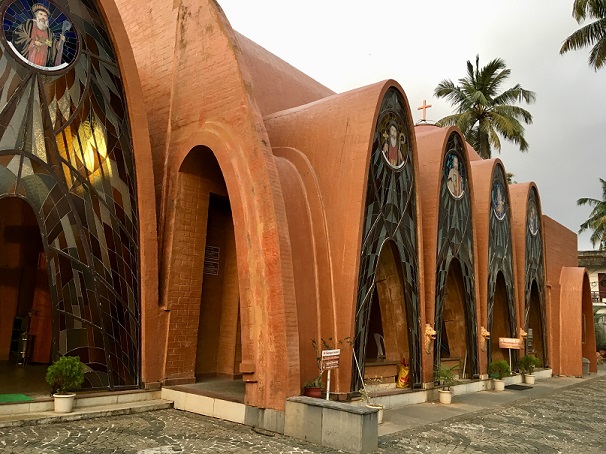
A Syrian Orthodox church in Kochi, Kerala
One thing that permeates Indian culture is spirituality. As I took the photo above, the prayers from this Syrian Orthodox church spilled out into the street and mixed with the Muslim calls to prayer and nearby Catholic masses. The multi-faith prayers echoed in bustling streets full of kids (human and goat) playing in the Sunday sunset.
While such a peaceful scene suggests the benign co-existence of diverse religious communities, religion also plays a political role in this nation of contradictions. At present, the political trend towards more oppressive and extreme Hinduism has seen division and violence in the country. This has a particularly negative impact on Muslim and Christian communities.
The southern state of Kerala has a mysterious religious history, one which has contributed to its unconventional story of development. European Catholicism first had contact with Kerala in 1498 when Portuguese sailor Vasco da Gama landed in Kochi with two Catholic priests on-board. But Keralan Christianity predates such contact and communities were found to be already worshipping Jesus, in the Syrian Orthodox Christian tradition. The Keralan church believes that Jesus’ disciple, Saint Thomas, founded 7 churches in the state in AD 52. This state, which calls itself ‘God’s own country,’ therefore has a far-reaching Christian history, which has influenced its present unique state of development. 19th Century Protestant missionaries brought education to people of all castes, both male and female, a move which was revolutionary in the highly stratified society of India. This has contributed to Kerala’s comparatively high literacy and gender equality status, with the highest Human Development Index and life expectancy of any Indian state.
The state’s religious culture is surely connected to its geography. Located on the west coast of the Indian subcontinent, Arabian spice traders have forged a centuries-long connection with the Middle East – the region of the birthplace of Christianity and Islam. The often-volatile coastal environment and richly biodiverse mountain rainforests take the brunt of the annual monsoon. Communities of deeply spiritual people whose livelihoods depend on the whims of the climate have turned to the gods – both Hindu gods or goddesses, the God of Abraham in the case of Judaism, Christianity or Islam, or the modern ‘god’ of sustainable development. For generations, people have devoted their lives unquestioningly to such higher powers with a loyalty that is to be admired.
Last year, devastating floods destroyed the homes and livelihoods of the vulnerable fishing communities lining the coast of Kerala, leaving thousands stranded on the second floor of buildings, unable to be retrieved by the few helicopters flown in to assist the rescue effort. Local fishermen mobilised using their fishing boats to rescue thousands of stranded people, plucking them from the floodwaters and bringing them to safety. Hearing these stories, I was reminded of a story from the life of Jesus. Jesus calls two disciples to leave their livelihoods of fishing and follow him. In doing so, they would become “fishers of men.”
For people living in relative comfort such as ourselves, it can be hard to conceive of the kind of faith that would shape lives and communities in such a way as it does in Kerala. In comfortable Australia, faith is often an ‘optional extra’. Perhaps we have something to learn from people with a greater understanding of how little control humans have over their environment and lives.
A ‘fair go’ for Indian workers.
By Nicholas Cramp
Bachelor of Commerce (Human Resource Management & Political Economy)
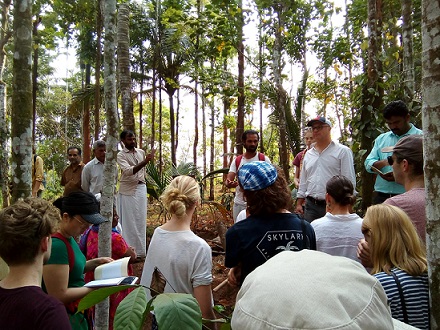
Having now spent two weeks studying and observing the complexity of Indian social and economic life it is safe to say that my appreciation for Australia’s industrial relations system has been renewed. Whereas “work” in Australia is founded upon principles of fairness and our livelihoods are safeguarded by legal instruments, the reality for the majority of Indian workers is strikingly different.
Only around 8% of India’s workforce are employed within the formal sector and have employment contracts that provide some social security and protection. The other 92% are engaged in the informal economy, vulnerable to externalities and often self-employed like the street-vendors we met in Mumbai. Throughout the Field School we have developed our understanding of the diverse challenges facing urban and rural workers and have, on many occasions, observed working conditions unfathomable in Australia. In Mumbai we witnessed labourers often working without safety equipment and, unlike Australia, if they were injured there would be no worker’s compensation to assist them. Similarly, in a seminar on informal employment, the vulnerability of domestic help workers struck me as there are no award wages or leave entitlements providing a ‘safety net’ for these workers and their families.
Whilst these examples provide a glimpse into the harsh reality of India’s unregulated employment relationships, our field school has also investigated how employment trends and policies are impacting India. Liberalisation policies to ‘open up’ India to the global economy have succeeded in promoting growth in the service sector, however they have also indirectly perpetuated inequalities. After observing this injustice of exorbitant wealth alongside destitute poverty, I am hopeful but perplexed as to how India can deliver improvements in employment conditions for its citizens. This challenge has also been complicated as Rural-Urban migration and increased educational attainment have heightened competition for decent work in India’s cities. Consequently, as the formal sector has not been able to create enough jobs for the 20 million Indians that reach working age each year, surplus labour is absorbed into the informal economy – where there is little to no state support to regulate their employment conditions.
By contrast, an example of successful employment policy that we have been lucky enough to witness first-hand is the MGNREGA (Mahatma Gandhi National Rural Employment Guarantee Act). This scheme, which any rural person may apply for, guarantees (within 14 days) one hundred days work on public works projects. In this program, women and men are paid equally and this provides a valuable source of income to over 111 million rural workers. We spoke with a group of these workers constructing a pathway in Wayanad district, Kerala. This initiative is an investment that is effectively promoting more inclusive development and is ultimately providing a India’s rural communities a ‘fairer go’ at improving their livelihoods.
Development for whom?
By Alexander Greenhalgh
Bachelor of Arts/Bachelor of Economics (Economics, Political Economy, History)
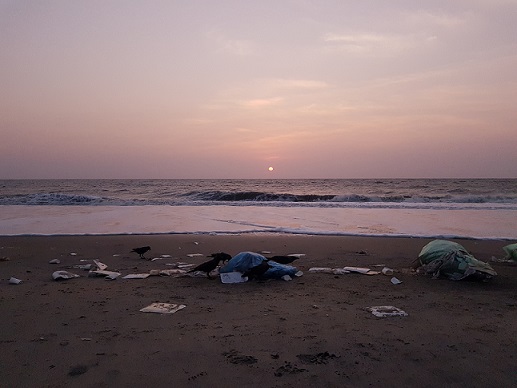
India is a country barrelling towards the future. It sounds like a commercial for an investment fund, but throughout the course of our travels in India we have never been far from some indicator of immense and rapid change. In Mumbai, cut-and-cover trenches divide arterial roads for installation of a modern metro system. Looking at the newspapers, special liftouts on proposals for ‘industrial corridors’ and loan waivers offered by the government as ‘heartfelt thanks’ to farmers are routine. The physical attributes of economic development are seen everywhere in India.
But this process comes into conflict with a complex contextual history. The traditions, social values and beliefs of the people of India are being overlayed with all the new jobs, forms of wealth and poverty of the new economy. The result is a world where old and new exist side-by-side. A case-in-point, was our visit to two fishing communities on the coast near Kozhikode. Our first stop was the busy and modern Puthiyappa Harbour, where local fishing crews described their way of living. An exploitative relationship was clear: they only rent their boats and sell their fish directly to commission agents, keeping less than a half of the value of their catch for themselves, pressing them to catch ever-larger hauls of fish. The question arises: have their attempts to integrate into the global market been beneficial? The harbour supports 1,500 families through jobs, but the lion’s share of the profits go to a wealthy boat-owner who does not share the same experiences or even live in the same village. There are amazing technical feats at work here: A haul of fish delivered in harbour at 6am in the morning can be sold in Abu Dhabi by 4 pm the same day. Yet the fishermen themselves are confined by this same globalised market – receiving only a small portion of the benefits. It’s a vicious cycle where their source of income becomes ever-more precarious.
Just down the road from the harbour, fishermen repair their nets by hand. This is a community which rejects the use of modern fishing techniques, instead relying on their traditional skills to locate the correct fish without destroying natural habitats. Rather than rent their boats, 20 to 40 families come together to purchase each boat for their shared benefit. Yet even the locals are having to deal with the developing world; overfishing has led them to travel further into the ocean, and their beachfront is littered with plastic rubbish. They say that they no longer need to catch as many high quality fish, because they are becoming so rare they bring a higher price at the market. They described this as simple “supply and demand economics”, but I have to question how pleased anyone can be with the prospect of a dwindling traditional food supply.
As India faces a national election this April/May, the Modi government promises greater liberalisation of the Indian economy, believing this to be the path to development. Yet with my experience seeing the vast inequalities in India, and hearing from the fishermen themselves the extent to which exploitation dictates their market position, I have my doubts about India’s trajectory.
Inequalities in India: An analysis for those who read the paper from back to front
By Rory Green
Bachelor of Engineering
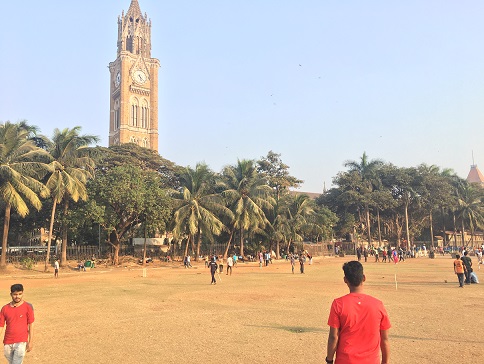
The purity of the sight of bat on ball contrasts with the rundown surrounds. Cricket is commonly played on the dusty fields of urban shanty towns and poor rural villages, but not as often as I’d imagined. Cricket is largely a rich man’s game in India. This reflects broader social inequalities. The majority are denied the opportunities, education and social connections enjoyed by those who worship at temple of cricket that is Maidan Oval in the heart of Mumbai. At the national level only four members of the Indian cricket team have come from the lowest caste, the Dalits, in the team’s 87-year history.
Patterns of power and privilege are evident in the glitz, glamour and opportunities of the wealthy in Mumbai. Much of this is reminiscent of the technicolour antics of the Indian Premier League (IPL). Like the T20 format, the city has burst onto the global stage in the last 20 years, exploding as market liberalisation allows the movement of businesses and talent into the city. This accentuates the power of the elite ruling class, whether it be Mukesh Ambani, Shar Rukh Kahn or Virat Kohli. But just as the IPL is replete with tales of corruption and match fixing, there are weaknesses in the cityscape of Mumbai.
Half the city’s population is confined to informal settlements. Reservations, like South African cricket’s quota system are not able to fully overcome the inequalities. The contrast between the elite and the majority are on display in M Ward East, home to the largest rubbish tip in Asia – at least until the English team visit India on tour.
In Kerala, far away from the technicolour antics of Mumbai, my legendary fellow field-trip members allowed me to watch the England Lions play India A, at a nearby field. This proper game of long form cricket reflects Kerala’s efforts to implement proper, long term development strategies. Delivering strong technical skills, fostering community participation and offering opportunities for employment are the key tenets of building both a successful cricket team and an Indian state. These policies are reflected in the Kerala state government’s additions to the National rural Employment Guarantee Scheme which offers extra days of work to the unemployed for recovery work after flooding. Impressive community led education and environmental programs create a nurturing environment, acting as high-performance academies for the next generation. These programs are just some examples of those that make Kerala, at least in our limited experience, appear more socially equitable compared to Mumbai.
Development and equality in India, varies as widely as cricket pitches across the globe. Unfortunately, in a lesson learnt from cricket, galvanising and growing India will require strong, fair guidance, but Indian politics is lacking the galvanising leadership of MS Dhoni or Virat Kohli, who have been able to pull the whole nation together.
Is Kerala the way forwards?
By Fayanne Cui
Bachelor of Science (Environmental Studies)/Bachelor of Law
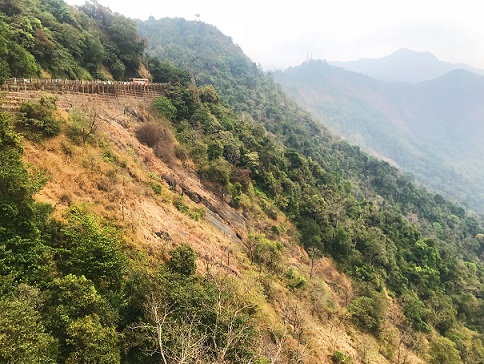
India is a nation fraught with contradictions. Despite their democratic system, there is a high level of political violence. The world’s most expensive residential property co-exists next to slum communities. The informal sector makes up 90 percent of the workforce, yet they have no job security nor legal protection.
These contradictions are what I carry in mind as we arrive in Kerala. Kerala sits along the southern coast of India, a state renowned for its breathtaking canals and flourishing biodiversity. On the four-hour drive to our accommodation, I am struck by not only this beautiful, mountainous landscape, but surprising prosperity and development. There appears a certain permanence to Kerala’s buildings, roads are well designed and impressively scale up the mountains. Yet its very geography poses a challenge to the people living here, shaping a lifestyle that is paradoxically dependent and threatened by the monsoon each year.
When monsoon rain is good, that is, when it arrives at the right time and is well distributed, the benefits reaped by the people are vast. Farm income increases from successful crop production, which in turn boosts the local economy by driving up sales of consumer goods and farm supplies. Dams, which provide water for hydropower generation, drinking and irrigation, fill up. The monsoon forms the crux of their livelihoods. Yet the 2018 Kerala floods reveal just how devastating excessive monsoonal rain can be. Deaths from falling debris was compounded by landslides that occurred due to deforestation. Large parts of Kerala were inundated because natural boundaries have disappeared with mining and development projects. Moreover, the intensity of monsoonal rain will only increase with climate change, causing areas like Kerala to become more susceptible to flash flooding.
How then does a state mitigate the impacts of such severe climatic disasters? In the week that I’ve been in India, it is clear to me that the solutions are neither obvious nor one dimensional. The survival of rural communities depends so much on the intricacies of their relationship with the environment around them, a relationship that is underpinned by a history of land degradation and the disproportionate impacts of climate change that they are vulnerable to. It seems to me almost impossible to overcome. However, a pilot study conducted in Meenangadi Grama Panchayath, a village level local administration, has opened my mind to potential change. Adopting a carbon neutral sustainability scheme, they have not only taken measures to reduce their environmental footprint in all sectors but have succeeded where some of the wealthiest nations have failed – addressing climate change as a systemic issue. Investment of 100 million rupees, funded by the state government, towards reforestation gives me hope that there will be a prosperous and progressive Kerala.
My time in India has indicated that no solution will ever be simple or straightforward. But if Kerala is capable of instigating such substantial change, then perhaps there is something to be said about India moving forwards in the right direction.
Dating in India: Social complexities of an emerging generation
By Stephen Sanders
Bachelor of Science, majoring in Environmental Studies and Geography
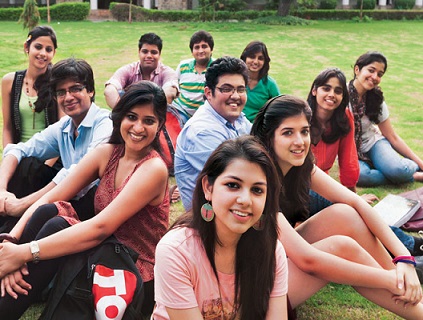
This has not just been a week of observation, but rather a week of personal reflection.
It’s been over a week since I first arrived in Mumbai, India, and I’ve seen numerous sights that have challenged everything I first thought about both India and the people.
We have learnt about caste and class systems, about religion and gender segregation and about the evolution of Indian society. Each dynamic has its own set of stories and implictions. However I have been particularly surprised by the place of women in Indian society, expressions of gender and sexuality, and dating as opposed to more traditional ‘arranged marriages’
It is no secret that women in India are marginalized, often horribly so, by a society that has withheld their rights for centuries. Unfortunately, this narrative seems to transcend national boundaries and is found worldwide. But it is changing.
I think a lot of the mistreatment is being challenged by the current generation of young women and young men. But there is still have a long way to go.
Globalisation and readily-available access to internet services is breaking down barriers between the traditional views of Indian society and the more liberal views of the rest of the world. My generation is at the forefront of this shift.
Social media, and in particular, uncontrolled dating sites like Tinder, blur the boundaries between caste and gender segregation and allow more liberal young people to more easily meet each other.
And… they allow foreigners to meet local people. I admit it. I used Tinder while travelling, before the field school began, and I instantly noticed some odd things about it. But it was only after talking to numerous people – from lecturers and professors to Indian friends and local people my age, that I began to realise some of the complexities surrounding dating in India.
Academics spoke about the history of gender divides in India, while local friends would elaborate on how they are perceived now. This has allowed me to develop a picture of India from a unique perspective.
India today is, in many ways, a subtle struggle between the old and the new. People in their twenties are emboldened by external influences and often push back against the traditional, conservative nature of their parents’ generation.
Young women I have met or spoken with often complained about the restrictions they feel when it comes to developing relationships with men. These restrictions seem entrenched in parenting and society. The young women I met often alluded to their own rebellion against these power structures, for good or bad. It is only a matter of time before this new attitude percolates into the greater mass of Indian society.
And to me, that defines a lot of the way Indian society currently exists; it is trying to find an identity within an entirely dynamic world, and that can be difficult. But at the individual scale, I am heartened by the youth of my generation who have the courage to step outside traditional social norms and challenge the system that seems to hold them down.
From a society that’s struggling to move beyond the caste system, gender inequality and religious division, India, and especially young Indian women, I think can look forward to a more equal future.
Traffic, Congestion and Air Pollution. How bad can it really be?
By Dominic Nevin
Bachelor of Science/Bachelor of Arts.
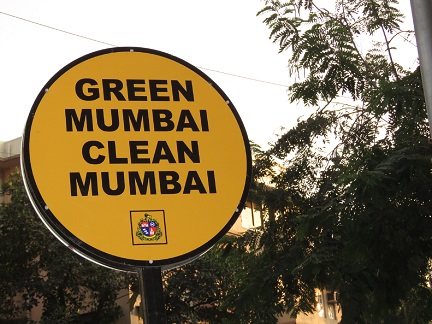
Having been in Mumbai over a week now I remain deeply concerned about where this megacity will draw the line when it comes to traffic congestion and air pollution. In the middle of Colaba, walking through a traffic jam, I came across the sign (pictured above) and found myself wondering if there were any serious measures that were being taken to keep Mumbai’s air clean. To me, the cleanest thing in that street, placed ironically in the middle of a busy city intersection, was the sign itself!
With over 20 million inhabitants, Mumbai has a population density of 31,700 people per square kilometre and as of now, the average air quality index for Mumbai sits at 154 which is just over the 150 threshold which deems it, quite simply, unhealthy for everyone. However, the most alarming thing to me is that with 52% living in large conglomerations of informal settlements, and cars belonging predominantly to the middle class, this pollution is being created by only a subsection of society.
Now let’s consider the possibility that India solves several impending crises through providing enough jobs to accommodate the highest youth population in the world; grant land tenure to all informal settlements; successfully implement their inclusive growth scheme to improve income; cure chronic poverty; and, facilitate equal rights for women in access to jobs and opportunities outside the home. One must at some stage, confront the question of how this development will affect traffic congestion and air pollution? Current estimates put deaths per year as a result of air pollution in India at over 1.6 million. How will Mumbai cope if social equality, and particularly car ownership, is suddenly secured for the majority of the city’s inhabitants?
Improving the current issues that Mumbai faces, without further impacting dangerously poor levels of air quality and traffic congestion is the challenge. Solutions might include: encouraging a mass return to more archaic forms of transport such as walking and cycling, and expanding the public transport infrastructure. From my experience in Mumbai, it seems critical that there needs to be a shift away from a culture of private care use. I say this as the congestion that I have so far seen moves little faster than walking pace, if it moves at all. Meanwhile tonnes of nitrogen dioxide are ejected into the atmosphere and ultimately our lungs. I can only hope that measures are being taken by the local government, following the examples of Milan, Dublin, Stockholm, Belgian, and Copenhagen, to create cleaner, more enjoyable and more people friendly cities for all.

